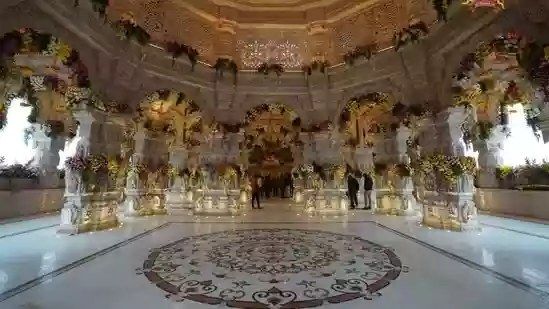.gif)
.gif)

In a remarkable display of architectural ingenuity, the newly constructed Ram Temple in Ayodhya stands as a testament to India's rich cultural heritage. The temple, designed by celebrated architect Chandrakant B Sompura and his son Ashish, is a blend of ancient Nagara style and modern technology. Erected on 2.7 acres of land, the temple boasts dimensions of 161 feet in height, 235 feet in width, and 360 feet in total length. Notably, the construction eschewed the use of steel or iron, a nod to ancient building practices during the Gupta Period when such materials were not prevalent in temple construction.
The Nagara-style temple, known for its distinct architecture, features a three-floor structure with a built-up area of 57,000 square feet. Standing on a raised plinth, the sanctum sanctorum, or 'garbha griha,' is crowned by the tallest shikhara on the third floor. Five shikharas are spread across five mandapas, supported by 300 pillars and adorned with 44 teak doors. The inner sanctum is adorned with Makrana marble, reminiscent of the Taj Mahal's construction material. A unique aspect of the temple is the integration of nearly two lakh bricks inscribed with Lord Ram's name in various languages, collected over 30 years.
What sets this architectural marvel apart is its meticulous construction. The absence of steel or iron is compensated by the use of granite, sandstone, and marble, employing a lock-and-key mechanism for durability up to 1,000 years. The construction process involved a 15-meter excavation, 47 layers of engineered soil, a 1.5-meter thick M-35 grade concrete raft, and a 6.3-meter thick plinth of solid granite stone. Additionally, the project saw collaboration with top Indian scientists, including contributions from ISRO technologies. The Central Building Research Institute (CBRI) director, Pradeep Kumar Ramancharla, and a team of scientists from CBRI and the Indian Institute of Astrophysics (IIA) designed a special 'Surya Tilak' mirror, a lens-based apparatus, for the ceremonial anointment of Lord Ram on Ram Navami day at noon.